10 Inspiring UX Portfolios

The UX job market is hot right now. Despite that, the competition for top positions at the most interesting companies is pretty fierce. Hiring managers have high standards, and in order to respond quickly and effectively to the dream job, it’s critical to have a solid portfolio that demonstrates your capabilities. A solid UX portfolio is more than just a set of screenshots or illustrations, it’s a proof that you can deliver results — it demonstrates your ability to create usable, useful, user-centric products. It should also give potential employers insight into what it would be like to work with you.
Putting together a portfolio can be challenging, especially if you’re relatively new on the UX scene. In order to simplify this task, I’ve pulled together examples that I think are inspiring for one reason or another. In this article you’ll find 10 real-world portfolio examples from UXers worldwide, each incorporating unique selling points. Let’s take a look at what makes them inspiring.
1. Simon Pan
Selling Point: Simon Demonstrates Problem-Solving Skills
UX design is all about problem-solving and anyone hiring a UX designer is hiring someone for their ability to systematically figure out the best way to solve their users’ problems. That’s why it’s so important to explain the goal and problems you are addressing with each of your projects. As you describe different case-studies in your portfolio, make sure you tell a clear story about what the problem was, and how you went about solving it.
Product designer Simon Pan created a portfolio that foregrounds his UX experience. By identifying the challenge he faced in each UX design project, and by describing his team’s actions for solving them, Simon creates a narrative arc that effectively sells his experience.
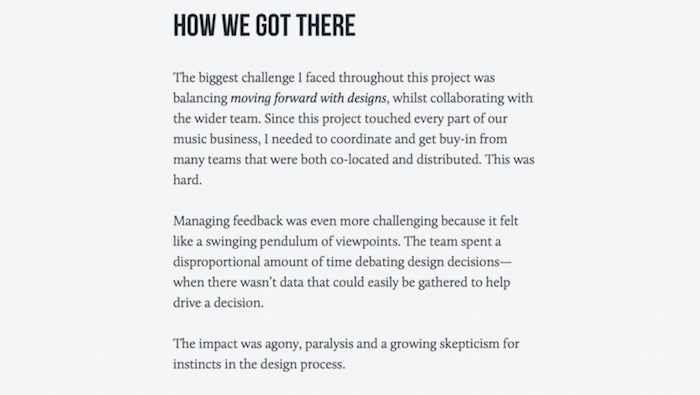
2. Joshua Taylor
Selling Point: Joshua Creates a Strong Narrative with Each Case Study
Not only the quality of your past work matters, but also the way you present it. The most engaging UX design portfolios make use of storytelling. With each case study you want to tell a great story about your work — a story of how the finished product arrived — from user research and ideation to prototyping and building a solution. This, however, is not always easy thing to do to, which explains why a lot of portfolios stop after putting up general information about projects. Stand apart from the pack by showing the journey, not just the destination.
Former Evernote design director Joshua Taylor tells compelling visual stories in his UX portfolio. He communicates his design process in a comprehensive and easy to follow way — he progresses in a linear fashion from the initial challenge, through his process, culminating finally in a solution.

3. Suzan Choy
Selling Point: Suzan Creates Promising Previews for Each Project
Usually, people who are reviewing portfolios don’t spend much time on each piece. According to UX experts Troy Park and Patrick Neeman, prospective employers spend an average of 10-15 seconds looking at a UX portfolio. So it’s vital to make sure you present information clearly and strikingly. Someone wants you to solve their problems and needs to know (quickly) are you the right person for that.
Suzan Choy’s portfolio is a great example of how to get user attention and engage them in reading more information. Suzan provides a high-level preview of her projects using card-based layout which is a perfect for scanning.
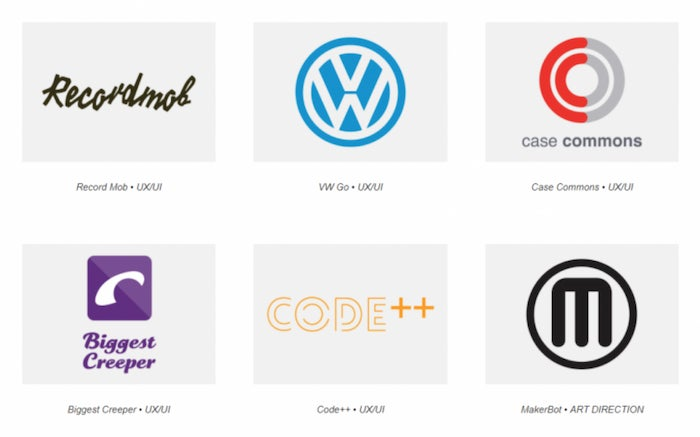
Each of her project is well-structured —she breaks down each case-study into a key concept communication brief.

4. Erik Bue
Selling Point: Erik Adds a Touch of Personality
Your personality is every bit as important as the skills you have. That’s all because people hire people, not portfolios. A touch of personality makes it possible to stand out and give your employers a glimpse of who you are on a personal level.Personality also makes your portfolio memorable. Employer going through the process of looking at a pile of portfolios needs something that sticks in the mind.
By injecting a humorous tone and a few facts about himself, Erik Bue makes his portfolio really unique and memorable .
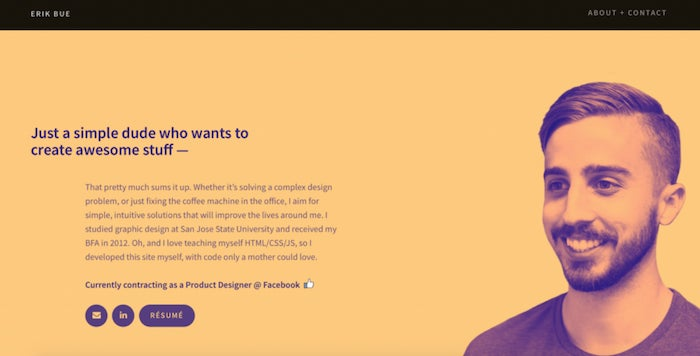
5. Slava Kim
Selling Point: Slava Demonstrates Visual Ability
Your portfolio is a good place to demonstrate your aesthetic skills in addition to your process. Attractive visual design matters. A picture makes a stronger impression than your written word at first glance. At the same time, don’t obsess over visual showcases, it’s much more important to emphasize how you solve business problems through design rather than focus solely on demonstrating your amazing visual design skills.
What really stands our about Slava Kim’s portfolio is his prolific use of imagery. Each case study has a lot of pictures that tell the story.
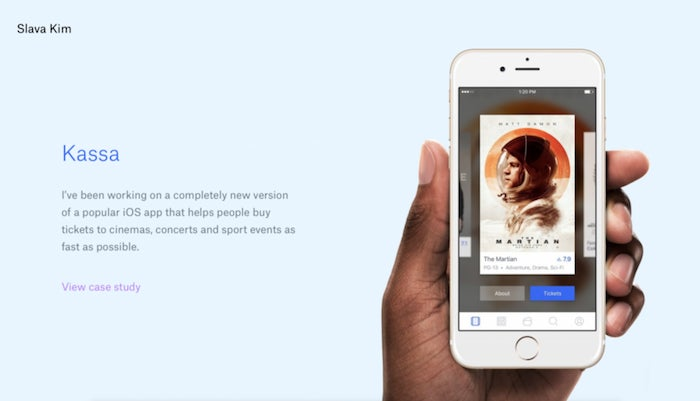
6. Jenna Coles
Selling point: Jenna Showcases Tool Mastery
Since a UX designer’s role varies in different organizations, it’s good to use your portfolio to help the employers understand what activities you usually perform and what tools you use on a regular basis. You want to convey your ability to apply the right tools and process to solve a problem.
On her site, Jenna Coles is upfront about her particular skills right from the home page.
For each project in her portfolio, she provides a description which includes basic information about the client, project goal and tools she used. For projects she complete with using Adobe XD, she provides a link to the interactive prototype which makes it possible to try and out a product.
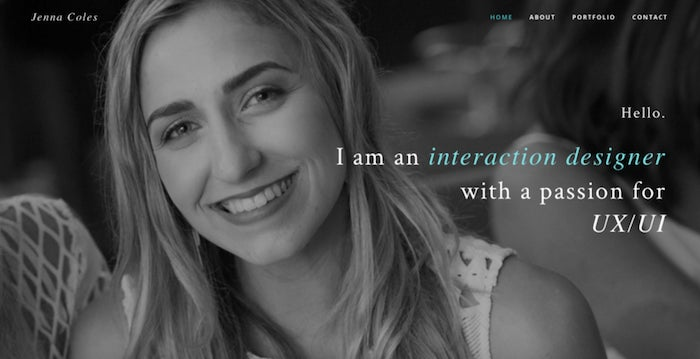
7. Christine Walthall
Selling Point: Christine Explains Her Role In Projects
Design is a team sport and, as a UX designer, it’s crucial to differentiate your role from the role of your teammates in your portfolio.
In her case-studies, product designer Christine Walthall explains her personal role in bringing the product to life.
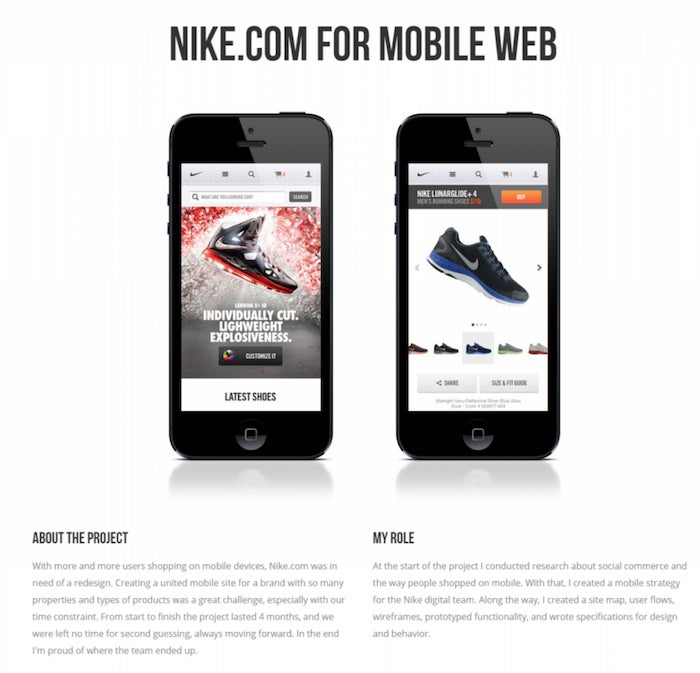
8. Edmund Yu
Selling Point: Edmund Provides Testimonials
Building trust is crucial for portfolios. Although testimonials don’t sell a designer on their own (i.e. you need other elements such as case studies in your portfolio as well), they can be an effective argument in supporting your candidature on a UX position.
What really stands out in Edmund Yu’s portfolio is the ‘Mentions’ section, in which Edmund collects testimonials and press snippets about his work.
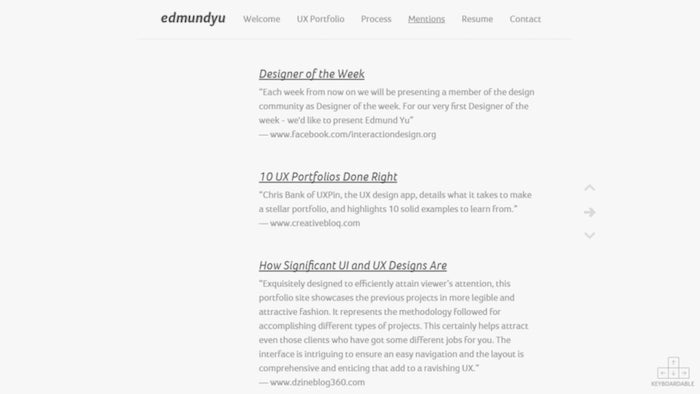
9. Adrienne Hunter
Selling Point: Adrienne Provides Tangible Results Of Her Work
You should show the tangible results of the work that you have done. Do you have sketches done by you? Personas you’ve created? Annotated wireframes? Show them to employers! Show how product works (good) or provide an interactive prototype (better), so your visitors can try it and have they own thought about it.
On her website, Adrienne Hunter not only describes what she does as UX designer, but also provides tangible results of her work.
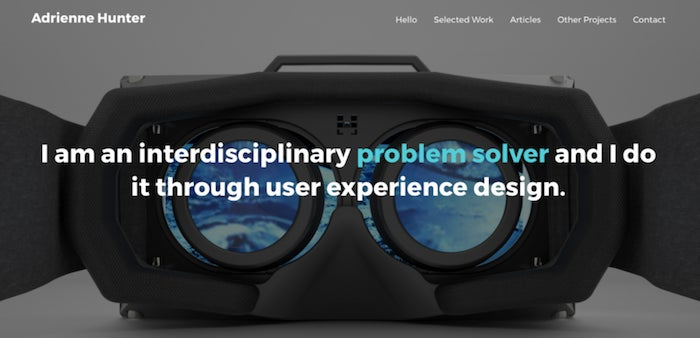
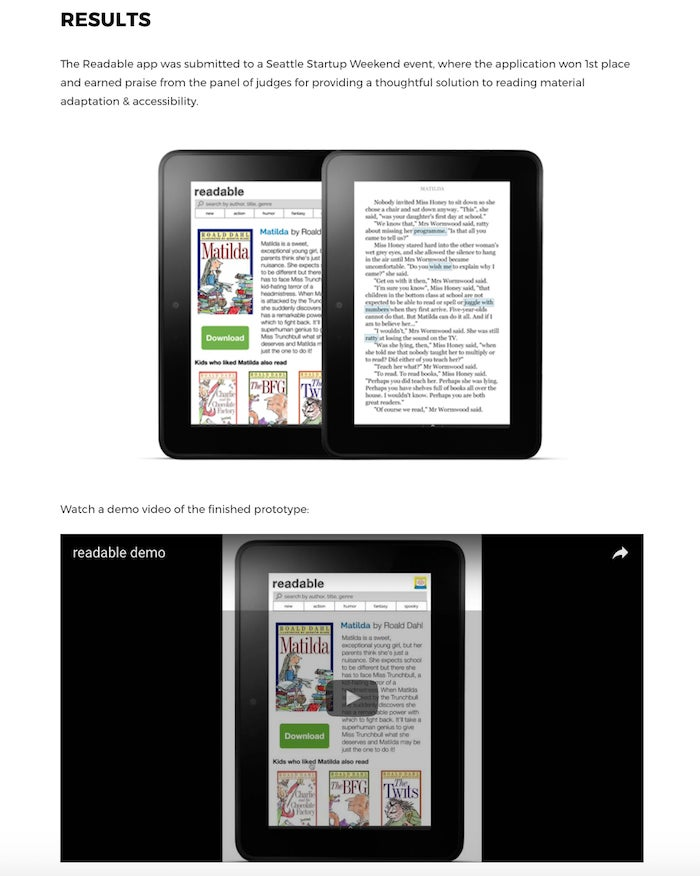
10. Amy Wu
Selling point: Amy Showcases the Value She Brings
Most portfolios don’t showcase the value UX designer brings to the company who is hiring them. They don’t have any ROI, numbers, analytics, not even the fact was the project successful from the business point of view. When employers are looking to hire a UX designer, they’re not just looking for the final product, nor solely the process by which you arrived there. They’re looking at the direct and measurable impact your work had with the client. Describe the impact of your work.
Amy Wu demonstrates the results of her work in section Wins for each case study. She demonstrates improved metrics that clearly shows how her designs impacted.
